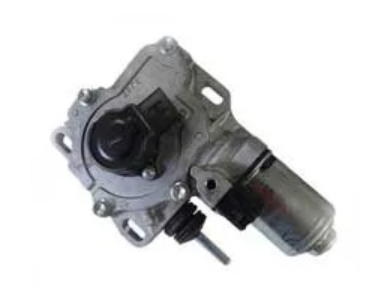Toyota has built a reputation for producing vehicles that last decades with minimal issues. Drivers around the world appreciate their reliability, fuel efficiency, and smooth driving experience. However, even the most trusted brands can face mechanical challenges, and one area that occasionally raises concerns is the transmission system. Toyota gearbox problems can affect vehicle performance, comfort, and safety if left unchecked.
This guide will explain the main causes of gearbox issues in Toyota cars, identify the warning signs every driver should recognize, and explore the solutions and preventive measures that help maintain a healthy transmission.
Understanding the Gearbox
The gearbox, or transmission, serves as the engine’s intermediary to the wheels. It ensures that power is distributed efficiently, allowing the vehicle to accelerate smoothly, maintain a consistent speed, and tackle inclines with ease.
In Toyota vehicles, gearboxes are engineered to perform reliably under various driving conditions. Nevertheless, even high-quality gearboxes are subject to wear, stress, and occasional faults over time. When problems occur, drivers may notice rough shifting, unusual noises, or a delay in gear engagement.
Common Causes of Toyota Gearbox Problems
Several factors contribute to gearbox issues, ranging from simple neglect to complex mechanical failure:
- Transmission Fluid Problems
Transmission fluid lubricates, cools, and provides hydraulic pressure for smooth gear operation. If the fluid is low, contaminated, or old, it can cause overheating, gear slippage, and internal damage.
- Overuse and Heavy Loads
Toyota vehicles used for towing, commercial purposes, or off-road driving experience extra stress on the gearbox. Excessive heat and pressure accelerate wear on internal components.
- Worn Clutch Components
In manual models, clutch wear is a common problem. A thinning clutch plate may result in slipping, grinding, or difficulty in shifting gears.
- Malfunctioning Electronic Components
Automatic gearboxes rely on solenoids and sensors. If these components fail, drivers may notice delayed shifts, rough gear transitions, or irregular behavior during acceleration.
- Internal Gear Wear
After thousands of miles, metal gear teeth can wear down, leading to grinding, difficulty selecting gears, and eventual gearbox failure if not addressed.
Warning Signs Drivers Should Look For
Recognizing early symptoms is critical to preventing costly repairs. Watch for:
- Slipping gears: loss of power or sudden gear changes.
- Delayed engagement: hesitation when shifting into drive or reverse.
- Unusual noises: grinding, whirring, or clunking during gear changes.
- Fluid leaks: red or brown spots under the car indicate transmission fluid loss.
- Dashboard warnings: check engine or transmission warning lights.
- Rough or jerky shifts: vibrations or jolts during acceleration.
Even minor symptoms can signal developing issues that need professional attention.
Toyota Models Frequently Associated with Gearbox Problems
Although most Toyotas are reliable, some models have reported gearbox concerns more often:
- Toyota Corolla – Older automatic versions may experience gear hesitation or slipping.
- Toyota Camry – Certain years have torque converter or shifting delays.
- Toyota RAV4 – CVT-equipped models sometimes exhibit jerky or unpredictable shifts.
- Toyota Hilux – Heavy-duty usage accelerates wear in manual gearboxes.
These patterns are not universal but provide a reference for proactive maintenance.
Solutions for Toyota Gearbox Problems
Addressing gearbox issues promptly can save drivers both money and frustration:
- Transmission Fluid Change
Replacing old or contaminated fluid restores lubrication and cooling, often resolving minor problems.
- Clutch Replacement
Manual gearboxes may require clutch replacement to correct slipping and improve gear engagement.
- Electronic Component Repair
Replacing faulty solenoids or sensors in automatic transmissions can restore smooth shifting. Updating transmission software can also correct electronic issues.
- Torque Converter Replacement
A failing torque converter in automatic vehicles can cause shuddering or poor acceleration. Replacing it can resolve these problems.
- Full Gearbox Rebuild or Replacement
For severe wear or internal damage, a rebuild or full replacement ensures long-term reliability. Although more expensive, it prevents ongoing performance issues.
Preventive Measures to Avoid Gearbox Problems
Preventing gearbox issues is often easier than repairing them. Toyota owners can follow these strategies:
- Regular maintenance: adhere to Toyota’s service schedule.
- Check fluid levels: ensure transmission fluid is clean and at the correct level.
- Drive carefully: avoid aggressive acceleration and heavy towing beyond vehicle capacity.
- Address minor issues early: fix leaks or slipping gears promptly.
- Keep electronics updated: ensure transmission software and sensors are functioning correctly.
Preventive care significantly extends gearbox life and reduces repair costs.
Costs of Gearbox Repairs
Repair costs vary depending on the nature and severity of the issue. Minor repairs like fluid changes, seal replacement, or sensor replacement are relatively affordable. More significant repairs, such as clutch replacement or torque converter work, may be moderately expensive. A full gearbox rebuild or replacement is one of the highest-cost repairs a vehicle may require.
Professional Assistance Is Key
Gearbox repairs are complex and require specialized tools, knowledge, and experience. Attempting DIY repairs can worsen the problem and even compromise safety. Consulting a professional mechanic ensures accurate diagnostics and appropriate repairs.
Conclusion
Toyota vehicles are renowned for longevity and reliability, yet Toyota gearbox problems can emerge over time, particularly in older models or vehicles subjected to heavy use. Recognizing early symptoms, performing regular maintenance, and seeking professional repairs promptly are essential to maintaining vehicle performance and safety.
If your Toyota exhibits gearbox issues, it is best to Find a specialist near you. Qualified technicians can diagnose the problem accurately, provide effective repairs, and restore the smooth driving experience you expect from your Toyota.

